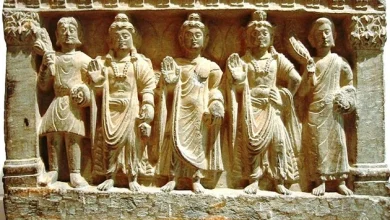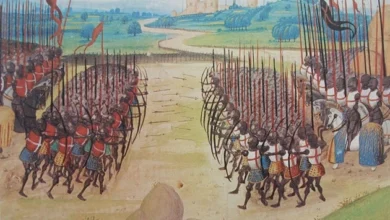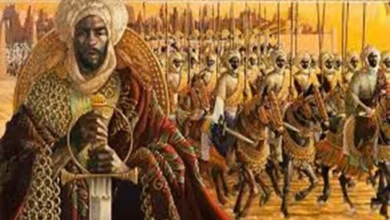The secrets history of the Mongols

The Mongols arose from their native lands in the XXIII century and established one of the world’s biggest empires. Once known as lowly shepherds and ruthless warriors, the Mongol Empire’s royal family rose to become the world’s wealthiest and most powerful dynasty. The Mongolian court concealed many secrets after moving from tents to the royal city of Karakorum.
Murder
When Genghis Khan was just 14 years old, he committed his first murder. According to information from “The Secret History of the Mongols,” a chronicle written by near contemporaries, the young Temujin (the great ruler’s name) was often beaten by his elder half-brother Bekter. Temujin and his younger brother Qasar crept up in the thickets of tall grass to a wayward cousin and riddled him with arrows after Bekter stole food from the family.
It’s hardly a surprise that Genghis Khan has believed murder to be the best solution to all problems since then, and many of his opponents have died mysterious ends. A famous Mongolian wrestler called Buri Boko died as a result of his negligence during a battle to insult Belgutei, Genghis’ younger brother, which happened before the great Khan got his authority.
“Secret History” refers to Temujin’s invitation to Storms for vengeance following his accession and ascension to the position of Khan. Fearful of the new Khan’s power, Buri opted to make a quick getaway, nearly giving up and allowing Belgutei to knock him down and stab himself. Belgutei, under Genghis Khan’s command, placed his knee on the enemy’s back, breaking his spine. The injured warrior was carried out of the arena and left to die in the streets. This is most likely because Temujin understood the Storm’s concept and punished him in this manner because he despises cowardice.
Killings
Despite Genghis Khan’s prohibitions against torture, Mongol executions were notoriously brutal. Guyuk Khan tormented Fatima, the overbearing court lady who had poisoned his brother. Guyuk’s men seized Fatima, tortured her, and executed her by sewing up all of her orifices and dumping her into water. Because it was considered forbidden to shed royal blood among the Mongols, another common means of execution was crowding.
A relative of Sultan Abbasid Caliph al-Mustaʿṣim was crushed to death by a herd of rearing horses while covered in a carpet. The captive Russian princes were executed beneath wooden floorboards after the Battle of the Kalka River. They were crushed by the weight of the Mongols’ victorious celebrations, which included a feast on top of the flooring.
Genghis ordered the captured ruler of the Tangut peoples right before he was crushed so that the spirit of the conquered ruler would be forced to serve the Mongols in the afterlife. He was lucky compared to the death of a Persian from a noble family, who was smeared with mutton fat, wrapped in a felt cloth, and left bound to die under the sun’s scorching rays.
Intrigues
Despite the Mongols’ image as arrogant and simple-minded soldiers, there was plenty of intrigue in their camp and any other people’s court, where there was always rivalry and plots. During Genghis Khan’s reign, the shaman Kokochu (Teb-Tengri) initially attacked the Khan’s brother, Qasar, speaking of a prophetic vision in which Temuin’s younger brother was attempting to rob him of power. Khan ordered Qasar’s arrest and condemned him to death almost immediately.
However, Hoelun, Genghis Khan’s mother, saved him. The woman went out in the middle of the night after learning of Qasar’s detention and broke into the Khan’s tent. Genghis was so taken aback that he did nothing to stop his mother from untying his younger brother. She pulled her clothes off and insisted that the brothers respond if they recognized the breasts they had sucked as children. The mother then scolded Genghis for an extended time until he decided to release his brother.
The shaman awaited Hoelun’s death and then took a fresh step, snatching her inheritance from her youngest son Temuge. When the shaman protested about the defeat, his siblings beat him and forced him to beg Teb Tengri for mercy.
Another woman, Genghis Khan’s oldest wife Borte Khan, interfered this time, warning her husband that the shaman meant to act against him. Temuchin used his favorite trick this time and staged a competition in which the shaman Teb Tengri’s back was broken and the paralyzed rival was left to die on the side of the road.
Slavery of women
Even though many Mongolian women had great status and significant authority at the time, feminism was not prominent in Mongolian culture. Foreign women were forcefully married off to Mongolian males or forced to serve as concubines after being seized during raids on foreign nations. The Mongols often requested young virgins as a kind of payment from the conquered peoples.
Some great women found the best way to escape from a dreadful prisoner situation. For instance, after conquering the Merkit clan, Genghis Khan married their womanToregene to his son Ogedei Khan. After the death of her husband, the prisoner quickly overtook all of the prince’s previous wives and ruled the kingdom for another five years.
The plot to eradicate the Chinese
Their horses had enough feed, so they were most at ease on the vast plains, which gave lots of comfort for them. Before beginning a war, they would dispatch smaller detachments of troops ahead of time to destroy farmland, orchards, and communities, months or years in advance.
Because of this, the land was able to return to pasture when the main Mongol force arrived. Furious by the challenge of conquering a fully developed region such as China, Ogedei Khan imagined a horrific extension of his current plan to invade the country. Essentially, the idea was to massacre the peasants of northern China and transform the old area of the Jin dynasty into a vast pastureland for cattle and sheep.
The actions of Yelu Chucai, Ogedei’s Chinese advisor, were instrumental in putting a halt to this homicidal conspiracy. As a result of his efforts, the khan was convinced that instituting a system of taxes would be more useful in the long term since it would provide a consistent source of cash to sustain the Mongol conquests. Fortunately, Ogedei heeded the advice of his minister and refused to give his approval to the plan to cleanse northern China ethnically.
The kidnapping that helped build and destroy a powerful empire
Around 1178, the newly-made wife of Khan Borte was abducted by the Merkit tribe Temujin; her angry husband immediately collected a small army, battled a brave warrior, rescued his first wife, and established himself as an unrivaled warrior. Perhaps this was the case that signaled the start of Genghis Khan’s epic conquests.
The abduction, on the other hand, signaled not only the beginning of the empire but also its ruin. When Borte was captured, she had been pregnant for several months, and no one could say for sure whether her legitimate husband or a rapist from among the kidnappers was the father. Genghis Khan accepted the child as his own, but the rumors about the child were not the best.
Many years later, the elderly Temujin summoned his whole family to the throne to announce the heir. Obviously, his oldest son, Jochi, born of Borte, should have been the one to make the decision. However, Chagatai, the old Khan’s second eldest son, insisted on being the one to convey the right to the throne, bypassing the Merkit’s bastard son. The encounter on the deathbed degenerated into an unworthy fight.
The brothers refused to reconcile despite his father’s attempts. As a consequence, Genghis reached a compromise and entrusted the empire’s government to his third alcoholic son, Ogedei. This was the start of four years of struggle and dissent that would finally lead to the empire’s demise.
Alcoholism
When the Mongols were poor shepherd tribes, they had practically no access to alcohol and drank fermented horse milk instead. This drink was not too alcoholic, and the output was not consistent throughout the year. Following Genghis Khan’s victories, riches poured into the Mongol hands, and many of them started to live affluent lives. Wine and other alcoholic drinks were now available in limitless quantities. Consequently, by the time Genghis Khan passed away, alcoholism had become a serious problem.
Even the great Khan’s family was no exception since at least two of his sons, Tolui and Ogedei, had committed suicide by drinking. Chagatai, their brother, was forced to tell his servants that they may only provide a few cups of entertainment drinks every day.
The problem was particularly acute in the instance of Ogedei, who had become fully reliant on wine. He became so alcoholic that the Persian historian Ata-Malek Juvayni said that he often made important official decisions while drunk.
The issue did not end with Genghis Khan’s children. When the European monk William of Rubruck visited the courtyard of Mongke, the great-grandson of the great Khan, he mentioned a silver tree with four taps, from which streams of grape wine, rice wine, mead, and fermented horse milk flowed like a fountain.
Cleansing
Genghis Khan took great care to ensure that Ogedei ascended to the throne without resistance from any opposition after his death. The main problem came in 1241 when Ogedei died of intoxication. Political turmoil grew to the point that two of Genghis’ four sons’ descendants were almost destroyed.
For the first five years, authority was concentrated in the hands of Ogedei’s wife, Toregene, who dominated the empire. She meticulously organized everything for her son Guyuk to be named the next Khan. This was primarily owing to cunning plots, including the killing of Genghis Khan’s sole surviving brother, Temuge. When his mother attempted to preserve the true authority for herself, Guyuk revolted. Toregene’s advisers were put to death, and the Queen herself died under unknown circumstances.
Two years later, Guyuk’s untimely death threw the world back into disarray, as the descendants of Jochi and Tolui banded together to place Tolui’s son Mongke on the throne and restore order. In opposition to them were the Chagataids and the Ogedeids, who are said to have attempted to murder Mongke and launch a coup. Mongke retaliated by launching a widespread cleansing. The ministers of Ogedei and Guyuk were apprehended and killed in cold blood.
Meanwhile, the army was organized into an extensive line and sent to Mongolia, where it was responsible for gathering up Ogedeid princes for death. In the course of the empire, special courts known as jarghus were sent to conduct show trials of Ogedeid supporters. The Toluids solidified their hold on the empire during this time, causing the Ogedeids and Chagataids to suffer years of recovery.
Civil War
During Guyuk’s short rule, the first Mongol civil war came dangerously close to erupting. Guyuk had been engaged in a ridiculous dispute with Jochi’s son Batu at a dinner in Russia, which concluded with Guyuk yelling that Batu “was merely an old granny.”
The two became bitter enemies, with Batu refusing to go to Mongolia to pay tribute when Guyuk ascended to the king. Guyuk responded by mobilizing his army and marching into Batu’s domain in Russia. Fortunately, Guyuk died on the way, preventing a full-scale conflict from breaking out. Despite Mongke Khan’s death, his brothers Kublai Khan and Ariq Boke tore the Mongol empire apart in a catastrophic civil war to decide who would replace him.
The Ogedei and Chagatai clans were able to make a return during the upheaval. But the clans of Jochi and Hulagu, Mongke’s other brother, broke away and formed autonomous nations in the West, which came to be known as the Golden Horde and the Ilkhanate, respectively. The Mongol Empire would never be entirely restored to its former glory.




